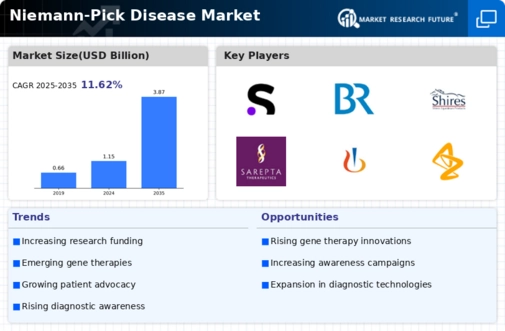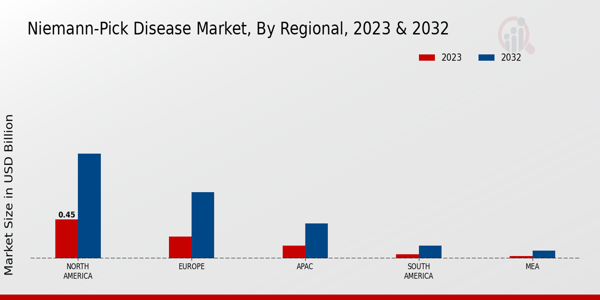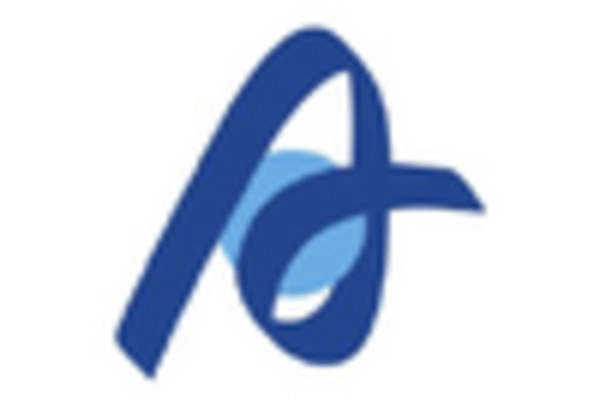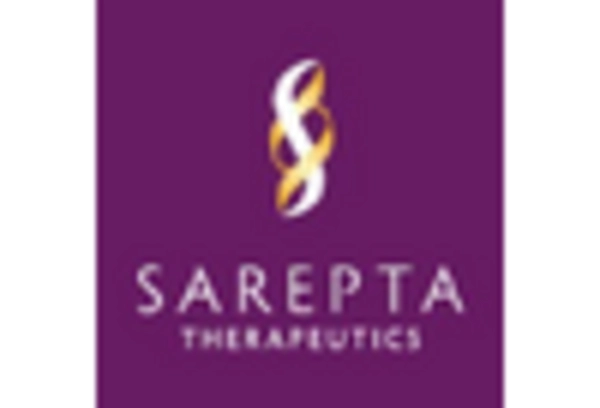Growing Awareness and Advocacy
Growing awareness and advocacy for Niemann-Pick Disease are crucial drivers for the Niemann-Pick Disease Market. Increased efforts by patient advocacy groups and healthcare organizations have led to heightened public knowledge about the disease and its impact. This awareness is instrumental in encouraging early diagnosis and treatment, which can significantly improve patient outcomes. Furthermore, advocacy initiatives often lead to increased funding for research and development, as well as support for clinical trials. As more individuals become informed about Niemann-Pick Disease, the demand for effective therapies is likely to rise, prompting pharmaceutical companies to invest in the market. Consequently, the Niemann-Pick Disease Market is expected to experience growth as awareness and advocacy efforts continue to evolve.
Investment in Research and Development
Investment in research and development is a critical driver for the Niemann-Pick Disease Market. Pharmaceutical companies are increasingly allocating resources to discover novel therapies, including enzyme replacement and gene therapies. The market has witnessed a surge in funding, with estimates indicating that R&D expenditures for rare diseases, including Niemann-Pick Disease, could reach billions in the coming years. This financial commitment is essential for advancing treatment options and improving patient outcomes. Furthermore, collaborations between academic institutions and industry players are likely to enhance innovation and expedite the development of new therapies. As a result, the Niemann-Pick Disease Market is expected to benefit from a rich pipeline of therapeutic candidates, ultimately leading to improved care for affected individuals.
Advancements in Diagnostic Technologies
Technological advancements in diagnostic tools are significantly influencing the Niemann-Pick Disease Market. Enhanced screening methods, such as genetic testing and biomarker identification, have improved the accuracy and speed of diagnosis. These innovations facilitate early detection, which is crucial for effective management of the disease. As diagnostic capabilities improve, healthcare providers are more likely to identify Niemann-Pick Disease cases, leading to increased patient enrollment in clinical trials and treatment programs. The market for diagnostic solutions is projected to grow, driven by the need for precise and timely identification of the disease. This trend not only benefits patients but also encourages pharmaceutical companies to develop targeted therapies, thereby fostering growth within the Niemann-Pick Disease Market.
Increasing Prevalence of Niemann-Pick Disease
The rising incidence of Niemann-Pick Disease is a pivotal driver for the Niemann-Pick Disease Market. Recent estimates suggest that the disease affects approximately 1 in 250,000 individuals, with certain types being more prevalent in specific populations. This increasing prevalence necessitates the development of targeted therapies and interventions, thereby stimulating market growth. As awareness of the disease expands, more patients are likely to seek diagnosis and treatment, further propelling the demand for innovative solutions. The growing patient population is expected to create a robust market environment, encouraging pharmaceutical companies to invest in research and development. Consequently, the Niemann-Pick Disease Market is poised for expansion as stakeholders respond to the urgent need for effective treatments.
Regulatory Incentives for Rare Disease Treatments
Regulatory incentives play a significant role in shaping the Niemann-Pick Disease Market. Governments and regulatory bodies are increasingly recognizing the need for expedited approval processes for treatments targeting rare diseases. Initiatives such as orphan drug designations and fast-track approvals are designed to encourage the development of therapies for conditions like Niemann-Pick Disease. These incentives not only reduce the time and cost associated with bringing new treatments to market but also enhance the attractiveness of investing in rare disease research. As a result, pharmaceutical companies are more likely to pursue innovative solutions, thereby expanding the Niemann-Pick Disease Market. The favorable regulatory landscape is expected to foster a conducive environment for the introduction of new therapies, ultimately benefiting patients.


















Leave a Comment